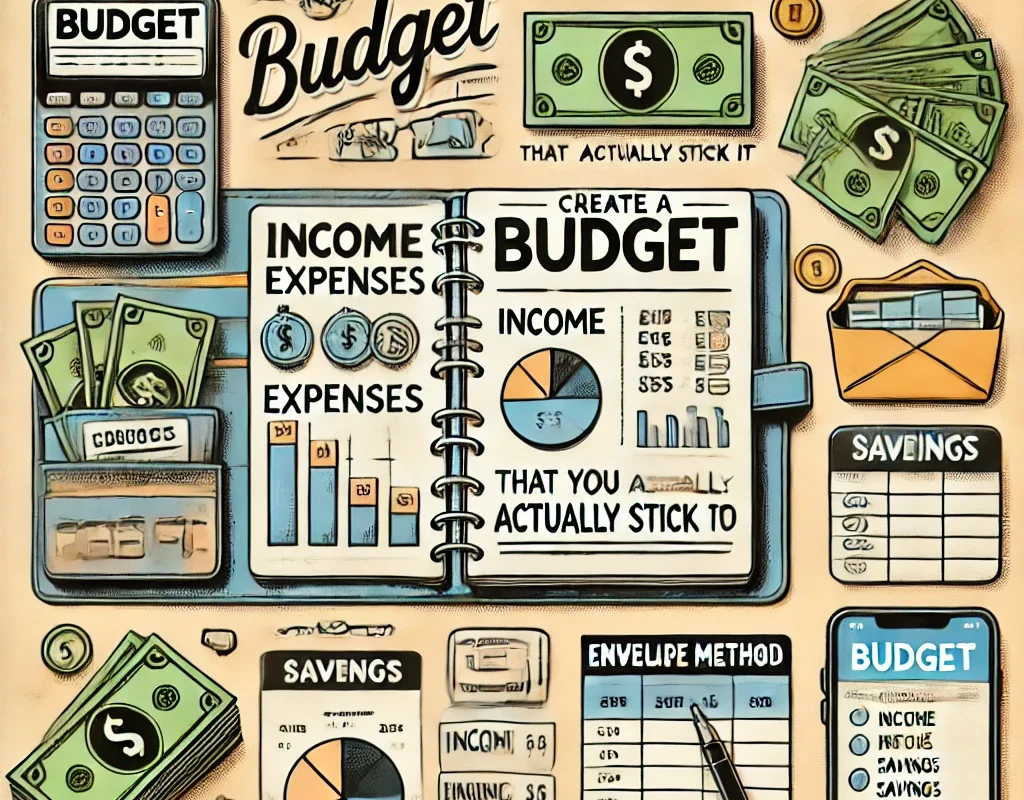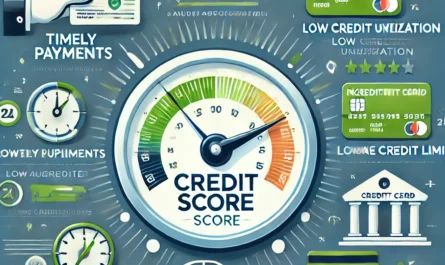Financial stability is something most of us strive for, yet many find it elusive. Whether you’re looking to get out of debt, save for a significant purchase, or simply regain control over your spending, a budget is your roadmap to success. However, creating a budget and sticking to it can feel daunting. In this article, you’ll discover practical strategies to build a budget that works for your lifestyle and ensures your financial goals are met.
Understanding Your Financial Goals
Before you begin setting up a budget, it’s essential to define your financial goals clearly. What are you working towards? Are you saving for an emergency fund, paying off credit card debt, or planning for a vacation? Understanding both short-term and long-term financial goals will guide how you allocate your money. Short-term goals, like saving for a new laptop, might require different planning than long-term goals such as retirement savings or purchasing a home.
Breaking your goals down into manageable milestones can make them feel more achievable. The clarity will provide purpose for your budgeting efforts and help you stay motivated.
How to Create a Budget
Once your financial goals are clear, it’s time to start building your budget. The key to a successful budget is making it realistic, flexible, and adaptable to your circumstances. You don’t want to create a plan that’s so restrictive it becomes impossible to stick to. Instead, think of your budget as a guide, not a set of rigid rules.
Assessing Your Current Financial Situation
The foundation of any good budget is understanding where your money is going. Start by evaluating your income and expenses. Track everything – from your paycheck to any additional side income or dividends. Once you know how much money you’re bringing in, it’s time to track your spending.
Track Every Source of Income
It’s easy to overlook small income sources, such as freelance gigs, side hustles, or dividends from investments. However, every bit counts. List all your income streams, whether regular or irregular. This will give you an accurate picture of your financial standing and help avoid surprises when it comes time to allocate your funds.
Calculating Fixed Expenses
Next, calculate your fixed expenses. These are the bills you know will come every month – things like rent, utilities, insurance, and minimum loan payments. Knowing these figures helps you ensure that your essential expenses are covered before you allocate money elsewhere.
Identifying Variable Expenses
After your fixed costs, it’s time to look at variable expenses. This category includes things like groceries, transportation, and entertainment – the expenses that can fluctuate from month to month. For this part of the budget, it’s important to set realistic spending limits. It’s also where you’ll find opportunities to cut back if necessary.
The 50/30/20 Rule
If you’re unsure how to allocate your funds, a popular budgeting framework to follow is the 50/30/20 rule. This guideline suggests that 50% of your income should go toward needs (like housing and groceries), 30% towards wants (such as dining out and entertainment), and 20% to savings and debt repayment. This method keeps your budget balanced while ensuring you’re meeting financial goals.
The Envelope Method
For those who struggle with overspending, the envelope method can be an effective system. The idea is simple: assign a specific amount of cash to different spending categories, and once the cash is gone, you can’t spend more. This method forces you to stick within your budget and helps build discipline over time.
Zero-Based Budgeting
A zero-based budget takes a slightly different approach. In this system, every dollar you earn is assigned a purpose, whether that’s paying a bill, saving, or spending. This way, no money is left unaccounted for. It’s a more hands-on method but can lead to more intentional spending.
Prioritizing Savings
When it comes to creating a budget, one of the most important steps is prioritizing savings. A good rule of thumb is to “pay yourself first,” meaning that you should set aside money for savings before you start spending on other things. This habit ensures that you’re consistently working towards your financial goals.
Building an Emergency Fund
One of the first savings goals you should focus on is building an emergency fund. This is your safety net for unexpected expenses like car repairs, medical bills, or sudden job loss. Aim to save at least three to six months’ worth of living expenses. While it may seem like a lot, start small and build up gradually.
Setting Realistic Spending Limits
Part of creating a budget that works is setting spending limits that are realistic. If your budget is too restrictive, you’ll likely feel deprived, which can lead to overspending. Allow yourself room to enjoy life while keeping your goals in mind. Balance is key.
Managing Debt
Many people create a budget because they want to manage or eliminate debt. Start by listing all your debts, including interest rates and minimum payments. Prioritize high-interest debt first, as it costs you the most in the long run. You might also consider debt repayment strategies like the snowball or avalanche methods to help you stay on track.
Handling Irregular Income
If you have irregular income, such as freelancers or gig workers, budgeting can be more challenging but not impossible. The key is to base your budget on your average income over the past few months. Additionally, having a “buffer” fund for months when your earnings dip below average can help smooth out the fluctuations.
Budgeting Tools and Apps
In the digital age, there are countless tools and apps designed to make budgeting easier. Apps like Mint, YNAB (You Need a Budget), and PocketGuard can help you track your spending, set goals, and stay on top of your financial picture. Choose one that fits your needs and tech comfort level.
Tracking and Adjusting Your Budget
A budget isn’t something you set and forget. Regularly reviewing your income and expenses is key to staying on track. Look at your budget at least once a month, and be prepared to make adjustments as your financial situation changes. If you’re overspending in one area, try cutting back in another.
Handling Setbacks
Life is full of surprises, and sometimes your budget will take a hit. Whether it’s an unexpected car repair or an unplanned medical bill, it’s important to adjust your budget as needed and not let these setbacks discourage you. Your emergency fund can be a great help in these situations.
How to Stick to Your Budget
Sticking to a budget requires discipline, but it’s also about adopting the right habits. Automating your savings, setting realistic goals, and using reminders can keep you on track. Remember, your budget isn’t set in stone – it should be flexible enough to adapt to your life’s changes.
Dealing with Lifestyle Inflation
Lifestyle inflation, also known as lifestyle creep, occurs when your spending increases in proportion to your rising income. It’s easy to fall into this trap when you receive a raise or a financial windfall and decide to upgrade your lifestyle instead of saving or investing the extra money. While treating yourself occasionally is healthy, it’s essential to remain mindful of your financial goals. Instead of increasing your discretionary spending when your income rises, consider increasing your savings rate or paying down debt faster. Maintaining your current lifestyle while boosting your savings will accelerate your financial success.
One simple way to combat lifestyle inflation is to automate your savings. Whenever you receive a raise, automatically allocate a portion of that extra income to your savings or investment accounts. This way, you won’t be tempted to spend it, and you’ll continue living within your previous means.
Avoiding Common Budgeting Mistakes
Even with the best intentions, it’s easy to make budgeting mistakes that can derail your progress. One common pitfall is underestimating expenses, especially for irregular costs like car maintenance or holiday gifts. A simple solution is to allocate a small portion of your budget each month toward these “forgotten” expenses, creating a buffer for when they arise.
Another mistake is not tracking cash spending. While it’s easy to track digital payments through apps and bank statements, small cash purchases can slip through the cracks. Keeping a log or using a spending tracker app can help you stay aware of where your money is going.
Finally, avoid being too rigid with your budget. Life happens, and flexibility is key. If you overspend in one category, don’t feel guilty – simply adjust your budget next month to balance things out.
Accountability and Support
Budgeting can feel like a solitary endeavor, but involving others can help you stay accountable and motivated. Whether it’s a partner, friend, or family member, sharing your goals and progress with someone can provide a sense of accountability. This support system can offer encouragement, celebrate your milestones, and help you stay on track when you’re tempted to stray from your budget.
In addition to personal connections, consider joining online budgeting communities or groups focused on personal finance. These communities offer a wealth of knowledge, tips, and inspiration from people who are also working toward financial freedom. Plus, seeing others succeed can boost your motivation.
Rewarding Yourself
Building and sticking to a budget can be challenging, so it’s important to celebrate your progress. Small rewards can keep you motivated and prevent burnout. For example, if you’ve successfully stuck to your budget for a month, treat yourself to something small, like a favorite meal or a movie night.
However, be mindful not to let your rewards undo your progress. Plan your rewards in advance and budget for them. This way, they become part of your financial plan rather than a setback.
Conclusion
Creating a budget that you can actually stick to is the cornerstone of financial success. It may seem intimidating at first, but by following a few simple steps – understanding your financial goals, tracking your income and expenses, and using proven strategies like the 50/30/20 rule or the envelope method – you’ll be well on your way to taking control of your finances. Remember, budgeting isn’t about restriction, but rather about prioritization and making sure your money is working for you.
As you implement your budget, don’t be afraid to make adjustments, track your progress regularly, and give yourself grace during setbacks. Sticking to a budget requires discipline, but it’s a skill that will pay off in every area of your financial life, leading you closer to financial freedom and security.
Outbound Links:
- Mint – A Free Budgeting App (Link to a popular budgeting tool)
- YNAB – You Need A Budget (Link to a premium budgeting app)
- Consumer Financial Protection Bureau – Managing Debt (Government resource for debt management tips)
FAQs
What is the first step in creating a budget?
The first step is to evaluate your current financial situation. This means tracking your income, expenses, and spending habits. Once you have a clear picture of your finances, you can start setting realistic financial goals and allocate your income accordingly.
How do I account for irregular expenses in my budget?
For irregular expenses like annual insurance premiums or holiday spending, allocate a small portion of your budget each month toward these costs. This will create a buffer when those larger expenses arise, preventing you from going over budget.
What should I do if I overspend in one category?
If you overspend in one category, don’t panic. Adjust your budget the next month to account for the overspending. The key is to be flexible and not let a mistake derail your entire plan.
How can I stick to my budget when my income fluctuates?
For those with irregular income, such as freelancers or gig workers, base your budget on your average monthly income over several months. Additionally, build a buffer fund to cover months when your income is lower than expected.
What are some common budgeting methods I can try?
Some popular budgeting methods include the 50/30/20 rule, the envelope method, and zero-based budgeting. Each method has its strengths, so choose one that fits your lifestyle and financial goals.
How can I avoid lifestyle inflation?
To avoid lifestyle inflation, automate your savings. When your income increases, set up automatic transfers to savings or investment accounts before you have a chance to spend the extra money. Maintaining your current spending level while increasing savings will help you build wealth more quickly.



